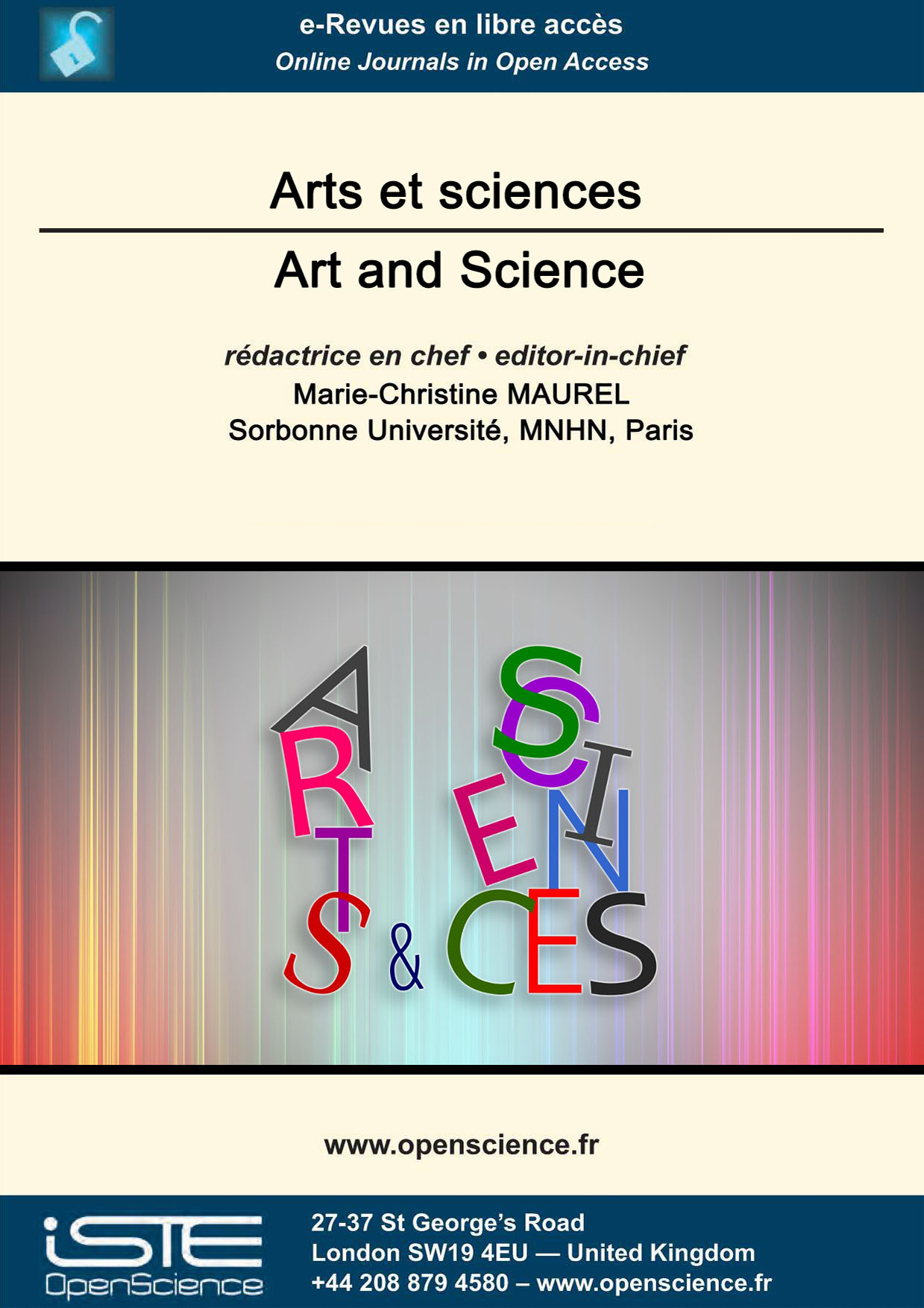

Social Sciences and Humanities > Home > Art and Science > Issue
Whether physical, metaphysical or psychological, the void is a polysemous and often paradoxical concept, generally associated with absence (of matter or any other content), or even lack. The question of the void has haunted mankind since time immemorial, and has accompanied the entire history of science. In ancient Greece, Parmenides and then Aristotle denied its existence, while the atomists Leucippus and Democritus asserted its omnipresence in the universe. From the scientific revolution of the 17th century to the relativistic revolution and beyond, physicists have sought to create and conceptualize it. With each successive theory of the vacuum, the opposition between the void and the full has evolved into complementarity or interdependence, culminating in quantum field theory, in which the complete vacuum is in continuity with matter. Visual artists, for their part, first represented the void as a foil to visible forms, in a static complementarity with the full, then confronted it as such, as in the "void exhibitions" of contemporary art. In the Taoist- and Buddhist-inspired Chinese pictorial tradition, on the contrary, this complementarity is a dynamic interpenetration, stemming from the original Vacuity.
Artificial intelligence manages to produce original and interesting literary texts, humorous comedies, exciting electronic games. Can AI help us interpret what art really is? To reduce the problem in a rational context, it is necessary to clarify the question: an art object is designed according to an analogical or digital mental procedure? Trying to establish a method to frame this question: to what extent is the representation of the human figure in art based on Cartesian dimensions? Art history can provide us with answers.
This article presents a French translation of an excerpt from Sacred Sites. The Secret History of Southern California, a poem by American writer and poet Susan Suntree. This translation is seen as an opportunity to discuss the advantages afforded by the free verse form to not only narrate the history of Earth and life but also cultivate among the public a deeper awareness about time. This article contributes therefore to the literature on the role played by artistic forms and technics in the study of the geological past or deep time. Commenting on the translated excerpt from Sacred Sites, it argues that the free verse form represents a poetic medium suitable to simultaneously give shape to the historicity of Earth and share something of the unique conditions in which this historicity is being studied. The educational and expressive potential of free verse and other poetic forms to share geological knowledge and perspectives should seriously be considered in view of today’s environmental crisis.
Antoine Risso (1777-1844) was a native and lifelong resident of Nice (France). He was a pharmacist by training and occupation, but became one of the foremost naturalists of his time. Risso published extensively on the flora, and particularly the marine fauna, of his native region. His ’magnum opus’ is an 1826 five volume work on the natural history of Nice and its region, treating geology, botany and zoology: Histoire Naturelle des Principales Productions de l’Europe Méridionale et Particulièrement de Celles des Environs de Nice et des Alpes Maritimes. The volumes included beautiful color plates, nearly all the work of Jean Gabriel Prêtre, one of the most reputable naturalist-painters of the first half of the 19th century. Risso’s Histoire Naturelle was greeted with considerable criticism when it appeared. However, today it can be said that it has passed the test of time. Of works published in 1826, Risso’s Histoire Naturelle appears among the top five in terms of total number of citations in academic journals, along with the classic works by D’Orbigny on cepalopods and Malthus on population growth. Nonetheless, Risso’s major work is unknown to most of us other than perhaps fish taxonomists, and specialists in scientific illustration. Here an attempt is made to introduce to a broad audience Antoine Risso’s interesting life and his major work, as well as the work of Jean Gabriel Prêtre.
The animated film "The Prince’s voyage" (2019), based on a previous film "A Monkey’s Tale" (1999), and inspired by Italo Calvino’s book "The Baron in the Trees" (1957), is marked by a strong vegetal influence, diversity and continuity. The film invites us into a fictional world, in which monkeys are the main animal species, with contrasting lifestyles. Throughout the film, we encounter all kinds of plants: the plant that supports and accompanies life, or on the contrary, hinders constructions that destroy it; the wild or domesticated plant; the decorative plant; the pharmakon plant, both remedy and poison; the threatening plant, physical or chemical. The plant world is thus present in the wealth of transactions (Dewey and Bentley 1949) that are established between species. Anthropology tells us that nature does not exist, that it is the world from which humans have withdrawn, the baron does not withdraw from nature but looks "at the world from the top of his tree: everything, seen from there, was different". The way in which humans perceive continuities and discontinuities in the world between humans and non-humans (Descola, 2011) is expressed differently in the film according to the different ape peoples. Could we then invent and reinvent "nature"? We are invited, by following the baron and the film, to contemplate and question our link to plants. How do the transactions established with the living world make the world?

2025
Volume 25- 9
Issue 12024
Volume 24- 8
Special issue2023
Volume 23- 7
Issue 12022
Volume 22- 6
Issue 12021
Volume 21- 5
Special issue2020
Volume 20- 4
Special issue2019
Volume 19- 3
Issue 12018
Volume 18- 2
Issue 12017
Volume 17- 1
Issue 1